Vehicles that both define a manufacturer and spawn an entire game-changing genre are a genuine rarity. Yet as the curtain drew on the 1970s and the technological arms race of the 1980s took to the starting blocks, a certain German outfit from Ingolstadt readied itself to drop a bombshell on the automotive landscape. That manufacturer was Audi and, on the 3rd of March 1980, it unleashed the UR (German prefix for ‘original’) quattro coupe on the world stage at the Geneva Motorshow. It’s a car that would shape the firm’s future and turn the rallying world on its head.
The 2.1-litre, turbocharged coupe packed all-wheel drive beneath its boxed wheel arches, a combination developed with the intent of slingshotting Audi into the automotive world’s consciousness as a technological force to be reckoned with. The genesis of this plan was none other than the future Volkswagen-Audi Group head honcho, Ferdinand Piech. At that stage he was a relatively fresh face among the Audi family as head of R&D. Audis at that point, in Piech’s own words, were “ordinary cars, liked by butchers and farmers.” Piech aspired to eventually challenge BMW and Mercedes-Benz. The first step in that ascension? The Audi UR quattro.
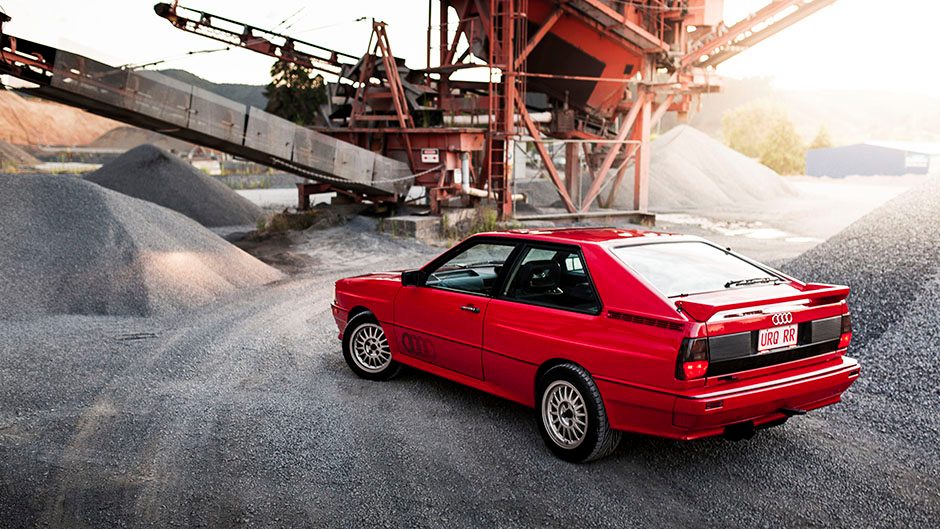
Development began in 1977, after engineers Jorg Bensinger and Roland Gumpert persuaded Piech that a high-performance, all-wheel drive sports car would be the springboard that Audi required to position itself as a high-tech challenger. The idea was born of Bensinger’s experience with the Volkswagen Iltis, an austere, military-spec off-road machine. They initially shoehorned the four-wheel drive running gear from the Iltis into an Audi 80 where it was mated to a 118kW turbo five-pot from the Audi 200. A bespoke transmission replaced the VW’s rudimentary transfer case. This was no mean feat, all the while occurring in the shadows of the department away from the top brass at both Audi, and parent company VW.
In early 1978, the resultant Audi ‘A1’ prototype was taken to a snowy Austria to demonstrate its opposition-crushing traction, negotiating Europe’s steepest road gradient in icy conditions. Furthermore, while the competition from Mercedes-Benz and BMW had snow tyres fitted, the A1 breezed past on regular summer rubber. The onlooking senior VW sales and marketing team were eventually persuaded, and the quattro project green lit.
Styled by British designer Martin Smith, the resulting UR quattro coupe cut a striking form on debut. With the base Audi 80 coupe as the canvas, Piech wanted the quattro to look “sporty, technical and aggressive” and so blistered fenders, revised front and rear styling and wind tunnel-developed aero defined the quattro form. Beneath the bonnet, a 197hp SOHC five-cylinder displacing 2144cc enabled a 0-100km/h sprint in 7.1 seconds with the assistance of turbocharging.
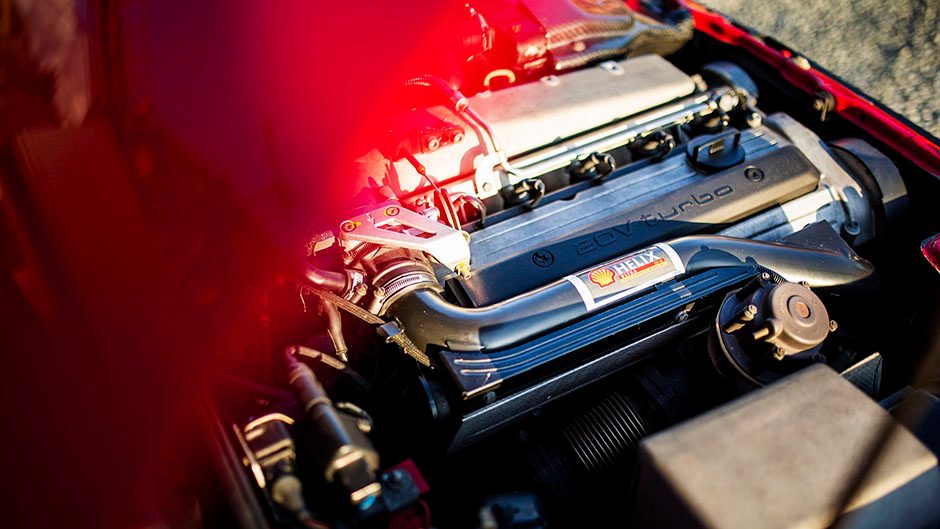
While the quattro wowed the press and punters alike, its greatest impact was arguably on the World Rally Championship stages. The quattro achieved a fairly inauspicious debut on the 1980 Janner Rally in Austria (non-championship), running in Group 4 specification. The competition initially regarded the quattro as being too heavy and complex. However, in 1981 the rallying game was flipped on its head. At the Monte Carlo rally, Hannu Mikkola proved the quattro potential by leading the rally by six minutes over his 2WD rivals before suffering mechanical woes. He made amends in Sweden, romping home to victory ahead of Ari Vatanen’s Escort. Michele Mouton would later win the Sanremo Rally, the first female ever to win a WRC event, and the quattro went on to rack up a hat-trick at the RAC the same year.
In 1982 the Audi legend blossomed, with Mouton taking three wins, Mikkola a pair and Stig Blomqvist a further two, leaving Audi a clear victor in the manufacturers’ race and their peers wondering what they needed to do to stymie the turbo all-wheel drive onslaught. In Group B guise, the quattro would come to typify the category with its the flames and crackles of the wastegated-turbo system and the distinctive five-cylinder howl reverberating through the forest. With all four wheels pawing for grip, the quattro’s rooster tails of gravelly shrapnel were amongst the world rallying’s most iconic spectacles.
Audi’s quattro changed the sport, accelerating the development of both all-wheel drive and turbocharged motivation. It is the grandfather of what came to typify the rallying homologation special; lairy, spectacular and crowd pleasing. The quattro was all of these, until the category’s demise following the 1986 season. By then various evolutions of the quattro had racked up 23 WRC wins, two manufacturers’ titles and drivers’ titles for Mikkola and Blomqvist.
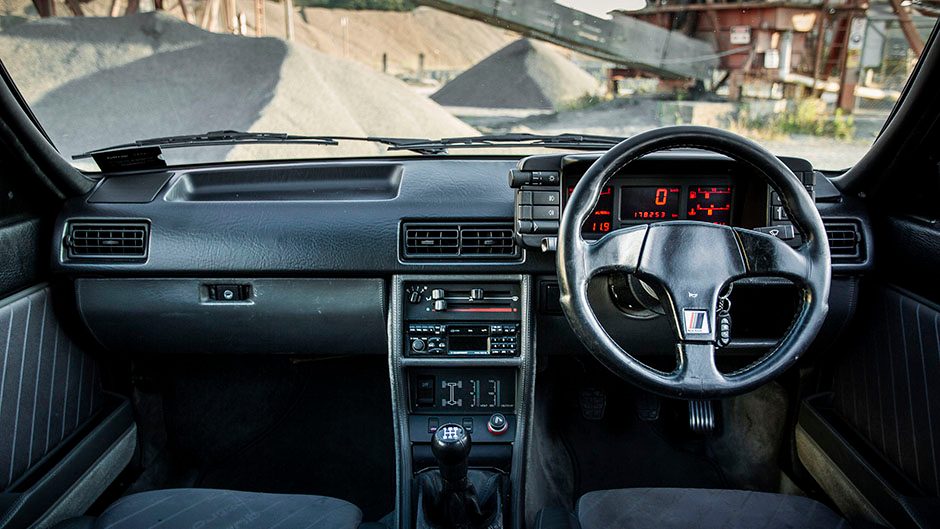
It’s little wonder then, that the UR quattro is now a desirable, sought-after classic. This 1990 example, belonging to Greg Spark, is one of just three 20V cars to be sold new on Kiwi shores. Such low numbers aren’t surprising when you consider its price tag of a shade under $150k (that’s a hefty $270k in 2021 money!) Greg explains it’s an ‘RR’ model quattro, the final revision over its ten-year production lifespan.
In brief, the initial 2.1-litre specification was prefixed WR and upgraded to the MB variant in 1988, with a modest increase in capacity to 2226cc. While peak power remained at 197hp, max torque chimed in much lower, with the older lump having something of a reputation as being ‘peaky’. The MB also saw addition of a torsen centre diff and a shift to an oh-so-80s LCD instrument display, with a few minor changes exterior wise.
The RR represents the final iteration of the quattro, comprising the last 1000-odd of the quattro’s 11,452-unit production. The five-cylinder received a new 20-valve head, boosting power to 217bhp and enabling peak torque to arrive at a supremely tractable 1750rpm. It had an Audi Sport motif on the steering wheel, an instrument colour change to orange versus the earlier green, and deletion of all ‘Audi’ or ‘quattro’ badging. Instead, the RR wore only the four rings both front and rear, with the iconic logo also adorning the lower flanks.
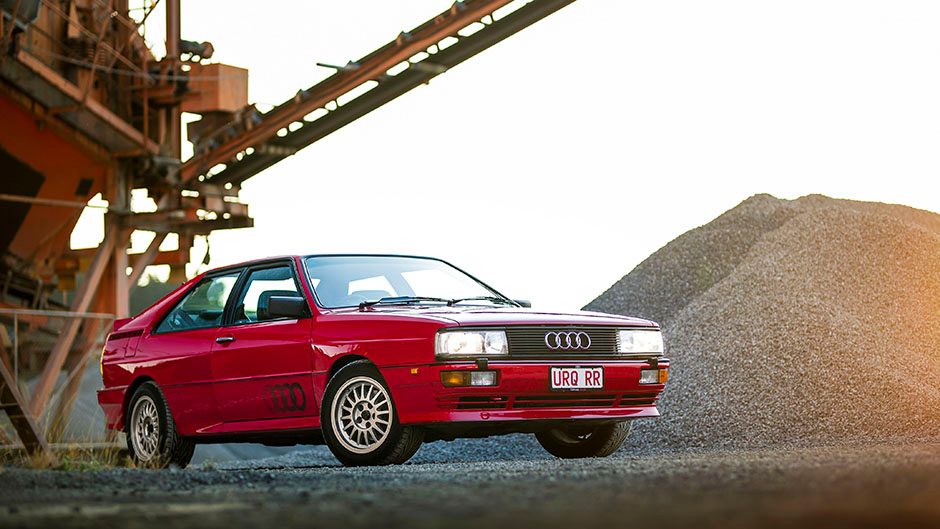
Greg explains he was an avid consumer of car mags in his teenage years, including the period when the quattro was making waves. “It sparked a huge desire,” he says but, as is the norm, life’s responsibilities never fail to interfere, and the quattro would remain a dream car until 2012, when Greg spotted his scarlet RR on Trademe. The quattro languished online for some months until Greg noticed the seller had dropped the price. This prompted a call, some negotiation, and the quattro dream became a reality.
In his own words, Greg describes the quattro experience as “very much of its era.” Being based on the Audi 80 sedan floorpan means space is available in spades, with adequate room for four grown ups to enjoy that legendary five-cylinder growl from within. And it’s comfortable, like you might expect from a German GT, equipped to devour distances with aplomb. But it’s in the driver’s seat where the real magic is encountered.
Greg’s got some stout credentials with which to draw comparisons. His ownership history reads like an auto enthusiast’s greatest hits list, encompassing everything from an Alfasud Ti, to a string of HSVs, tuned Audi A3 and A4s, Porsche 911, and Integra Type R in both track and road forms. He has also had a hat-trick of appearances at the Nurburgring 24 hour.
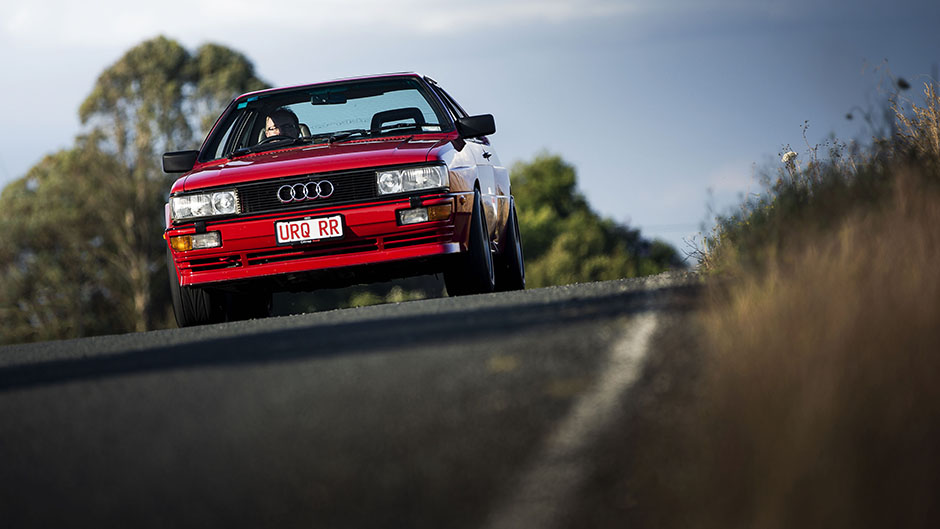
“It has a very direct, mechanical feel,” Greg says of the quattro’s manner. He’s owned and driven a few Audis and reckons the quattro steering feel is yet to be beaten by any later model from the marque. From the passenger seat, the compliant spring rates and noticeable body roll – relative to modern counterparts – evoke Porsche 944 levels of capability. It’s trump card is effective high-speed cornering, and Greg mentions that overall the handling is fairly neutral. With all five of it’s cylinders thrumming away ahead of the front axle, the quattro is biased towards understeer at the limit but it’s predictable and rewards a slow-in, fast-out driving style using the traction to advantage.
Having that five-cylinder is integral to the quattro character. Nothing else on the road sounds quite like it, and while it exhibits a very period-correct dose of turbo lag, the five-pot offers a smooth, refined power delivery that defies its off-beat tone. It’s all part of the character, emboldening the driver to chop back a gear and pitch that boxed front-end into a turn, living out that 80s Group B fantasy.
Of course, the aesthetic cannot be denied. “It just looks striking even today,” Greg exclaims, adding, “it looks best from a rear three-quarter view. Those big flared guards over eight-inch wheels, squared off rump and large spoiler stage one hell of a show.”
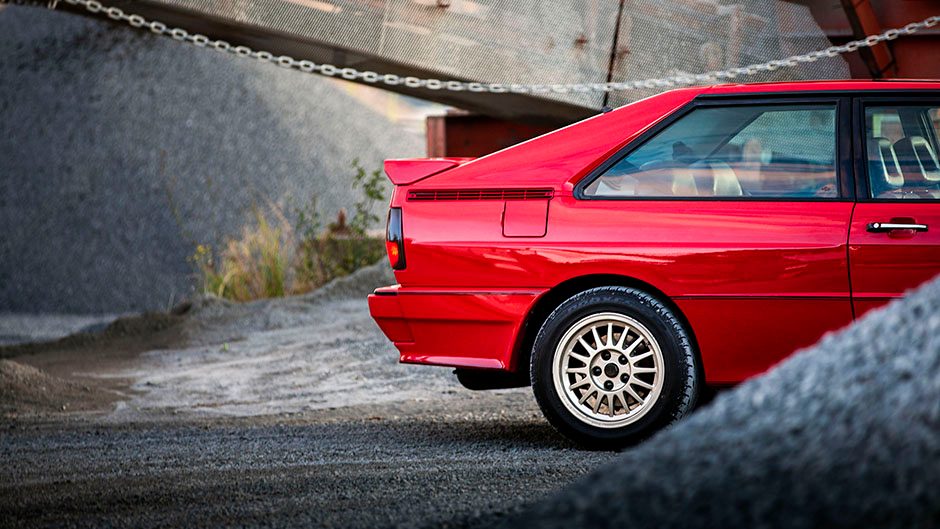
Greg’s garage is fairly fluid, but the quattro has remained a long-term fixture. It’s an exclusive club to belong to – the other two Kiwi-new cars do still exist – and while the allure of other classics is always that carrot dangled in front of the gasoline-tragic, Greg reckons it’s likely to remain secure in his custodianship for the foreseeable. “Knowing the history and significance of this car, the its rarity really is the icing on the cake,” he says.
With Audi now closing the chapter on ICE power and angling to become a world leader in electrification, the UR quattro is undoubtedly a poignant reminder of the last time Audi set its sights on giving the world a good thrashing.


